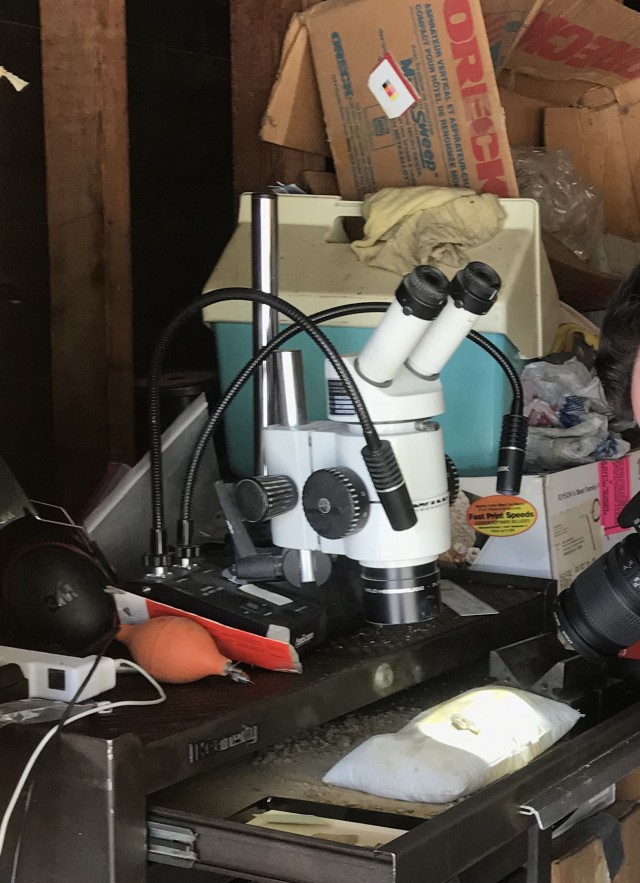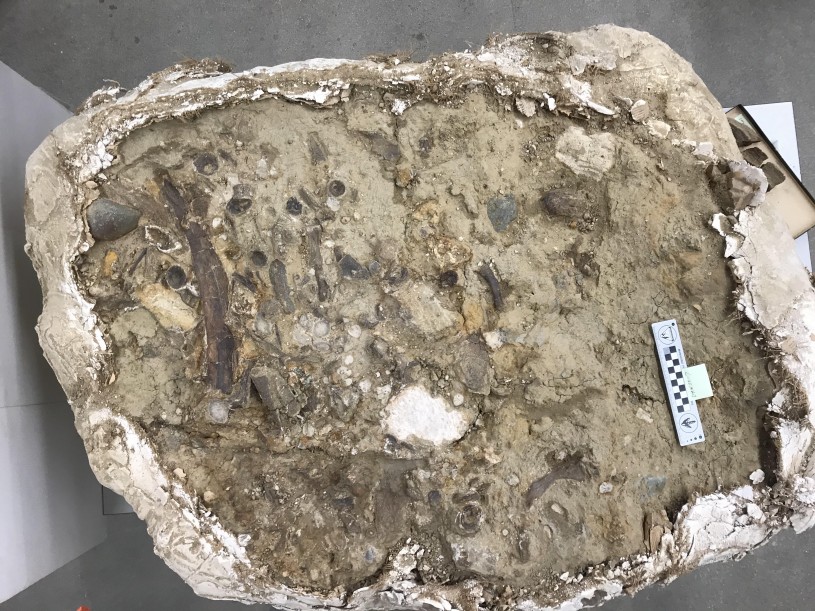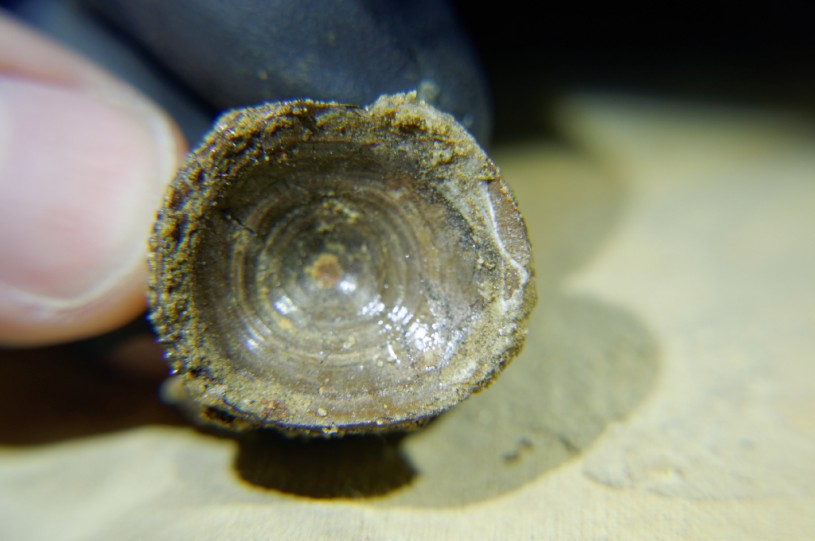The Hart Museum remains closed. Los Angeles County has approved a plan to transfer the William S. Hart Museum and Park from the County to the City of Santa Clarita.
A Different Kind of Prepping
For Vertebrate Paleontology Preparator James Preston, science doesn’t stop.

As a preparator in NHM’s Vertebrate Paleontology department, James Preston plays a vital role in preparing materials collected from the field for study and cataloging within the collection for future scholarly research. So when it started to look like the museum might be closing temporarily, his department (along with others) prepped for preparing from home.
Preston was sent home with materials from two sites: the Marble Head Bone Bed from the Capistrano Formation of San Clemente, California, and the Red Line subway extension here in Los Angeles. While the two jackets (plastered bundles of excavated materials) from the subway dig have yet to be worked on, Preston and the Vertebrate Paleontology Department's staff have been working on jackets from the Marble Head Bone Bed since the 1980s.

“Being a bone bed, it is chock full of different species all piled on top of each other and, because it comes from the Miocene time period of California, it is all marine life. I'm finding all sorts of animals, large and small.” Preston is continuing the work started back at NHM, marking a through-line of investigation into this important material. He’s uncovering animals from the ancient Californian coast that will help paleontologists better understand the biodiversity of the past. “In the jacket back at the lab, I've also found dolphin and whale fossils including ribs and a tooth.”

While leaving the paleontology lab behind isn’t easy, Preston is making the most of the space he has at home. He’s converted his garage into a makeshift preparation lab, with a tool cabinet for a desk, its drawers emptied and set up to catch anything that might fall. The setup is working well for the most part, but some specialized tools can’t be replicated at home. “If I were in the lab, I would have access to pneumatic tools that could work through these concretions, but from home I only use hand tools like dental picks or a needle in a pin vice to do my prep work.” The work goes on with safety at the forefront, even if it’s at a slower pace.
Like all of us, Preston isn’t alone even if he’s working from home. His challenges are just a little more fossilized than most. Other NHM researchers and collections specialists are also dealing with problems unique to their fields of study. To them, Preston would like to ask, ”What innovative tools or methods have you made or created out of your own household goods to help you continue your scientific work from home?”